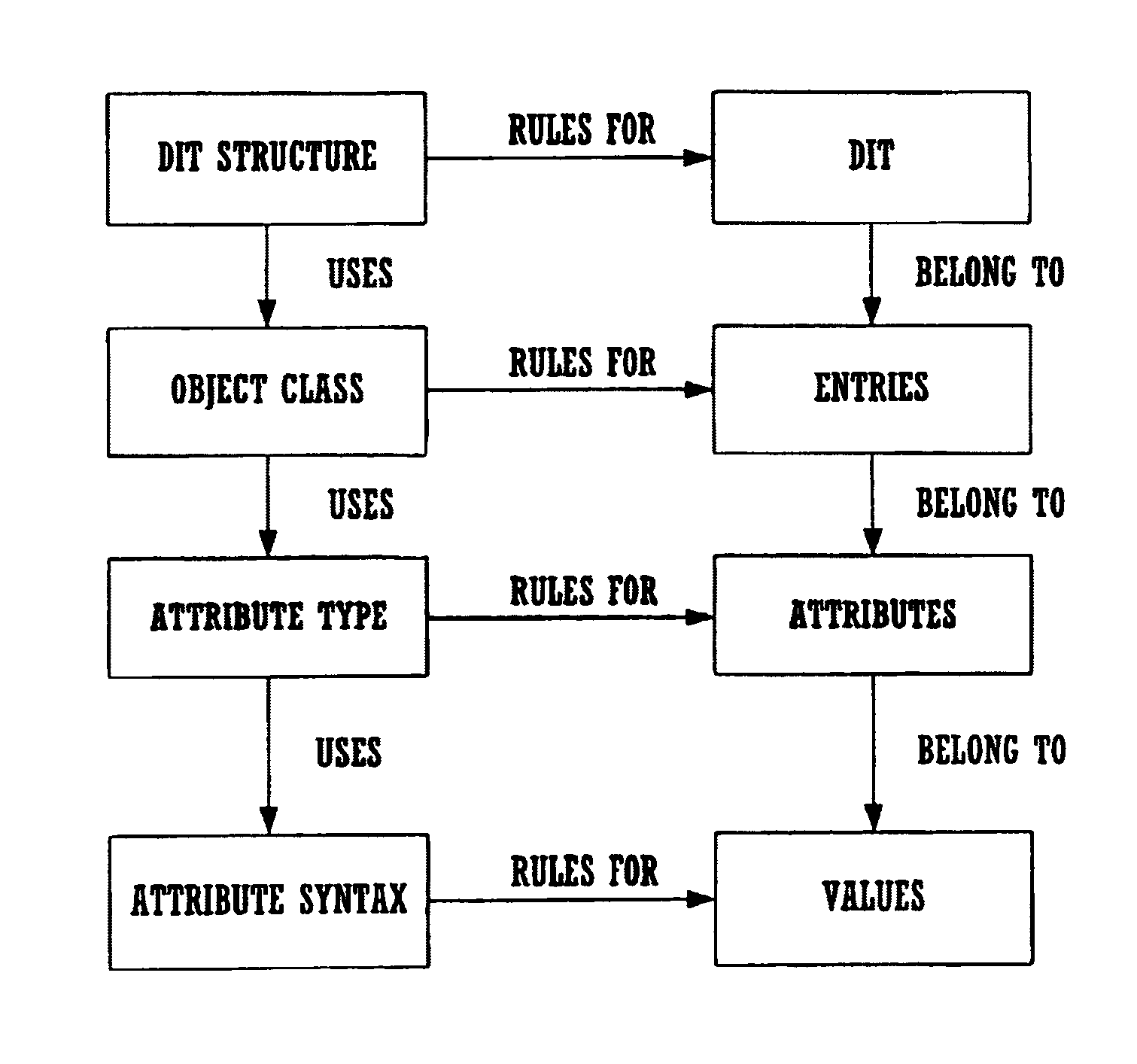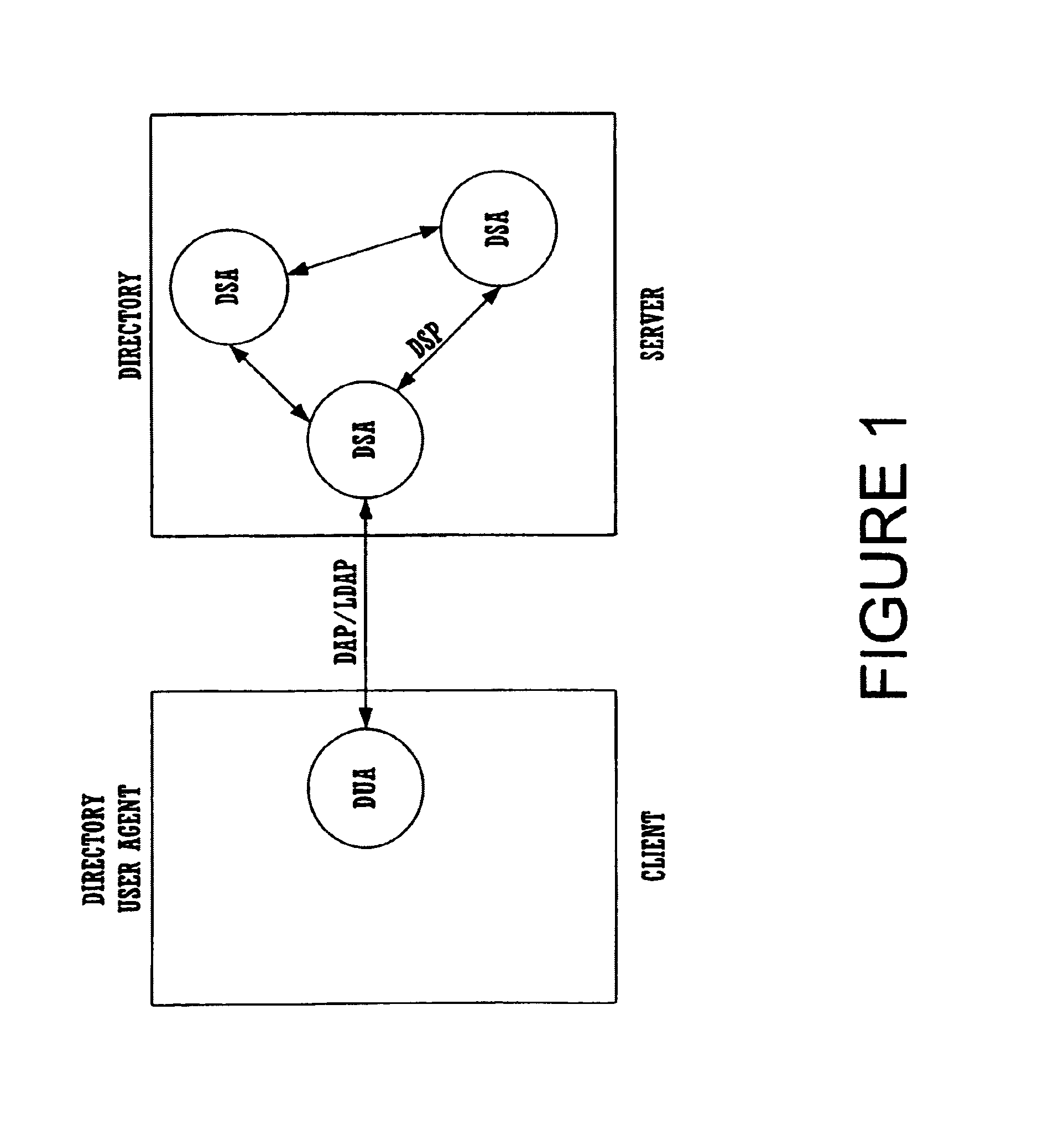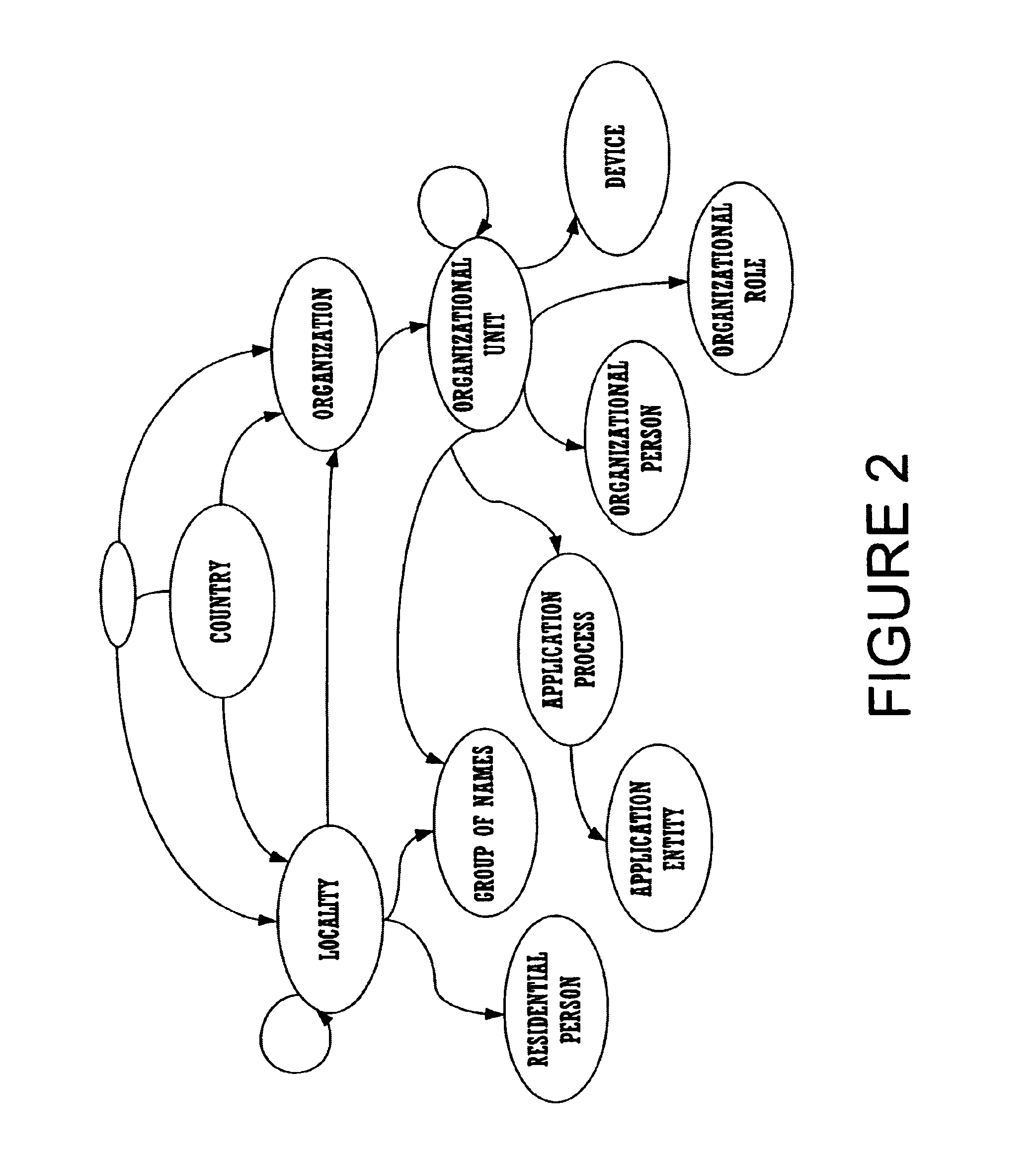Method and system for sharing entry attributes in a directory server using class of service
a technology of service and attribute, applied in the field of directory server, can solve the problems of increasing training and support costs, extending this type of enhanced interpretation of directory data in the context of a system function outside the directory server, and affecting the accuracy of the directory server
- Summary
- Abstract
- Description
- Claims
- Application Information
AI Technical Summary
Benefits of technology
Problems solved by technology
Method used
Image
Examples
Embodiment Construction
[0064]The presently disclosed system and method can be implemented using hardware, software or a combination of hardware and software. Specifically, the disclosed system and method can be implemented using either object-oriented programming languages, like the Java and C++ programming languages, or procedural programming languages such as the C programming language. The disclosed system and method can be implemented using a computer system with a single personal computer or a network of multiple computers.
[0065]Reference will now be made in detail to exemplary embodiments of the disclosed system which are also illustrated in the accompanying drawings. Although the description includes exemplary embodiments, it can be easily seen that other embodiments are possible, and changes can be made to the embodiments described without departing from the spirit of the disclosed system and method.
[0066]FIG. 5 is a block diagram that illustrates a computer system 100 upon...
PUM
 Login to View More
Login to View More Abstract
Description
Claims
Application Information
 Login to View More
Login to View More - R&D
- Intellectual Property
- Life Sciences
- Materials
- Tech Scout
- Unparalleled Data Quality
- Higher Quality Content
- 60% Fewer Hallucinations
Browse by: Latest US Patents, China's latest patents, Technical Efficacy Thesaurus, Application Domain, Technology Topic, Popular Technical Reports.
© 2025 PatSnap. All rights reserved.Legal|Privacy policy|Modern Slavery Act Transparency Statement|Sitemap|About US| Contact US: help@patsnap.com



